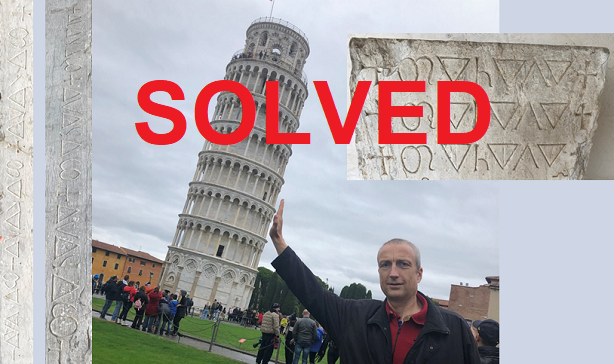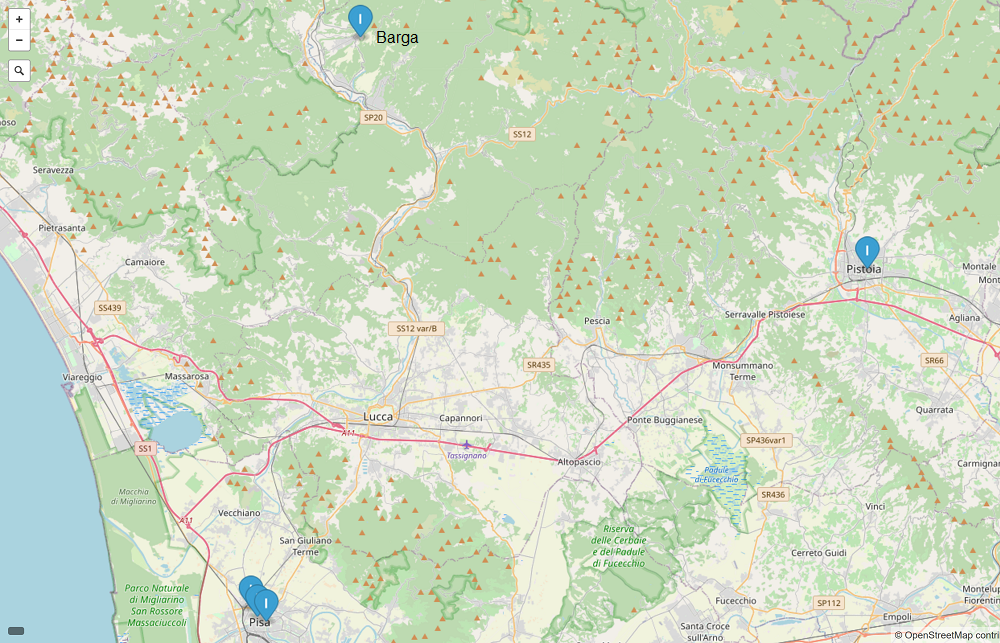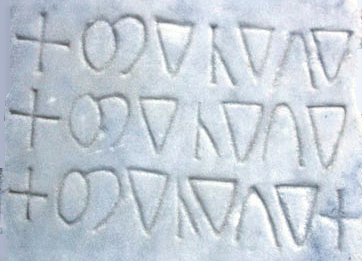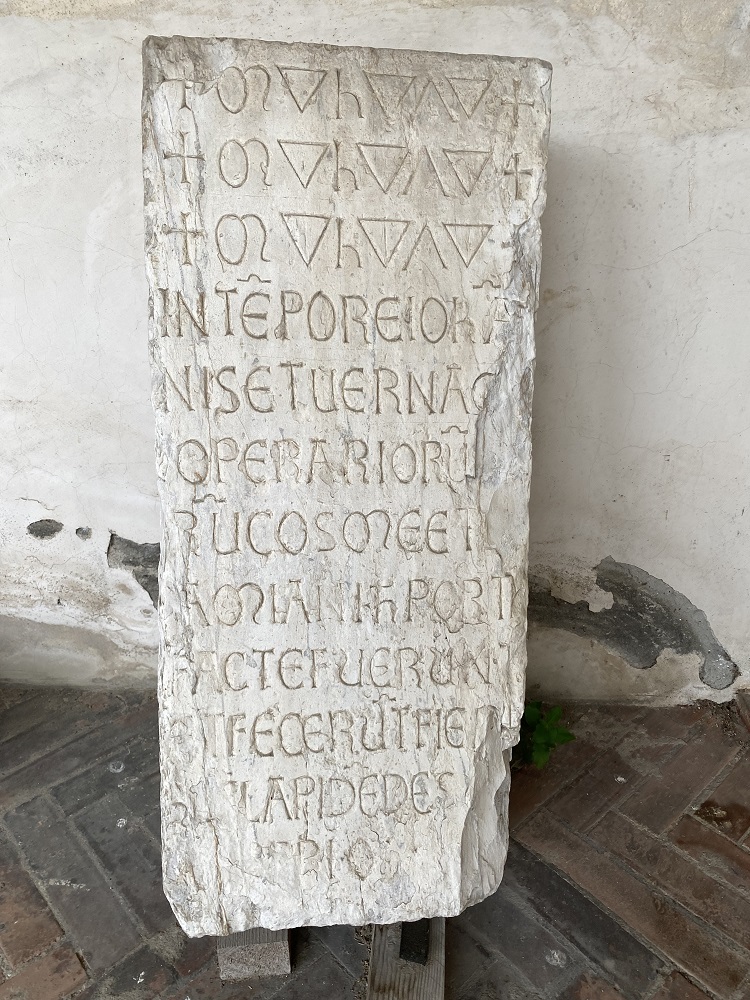The encrypted inscriptions of Pisa (2)
What do the five coded inscriptions of Pisa and its surroundings mean? Today I can present the probable answer.
The day before yesterday I blogged about three scrambled inscriptions in Pisa that I visited as part of a trip to Italy.
As I mentioned, there are two other inscriptions of the same type found in Barga and Pistoia. All three towns are in Italy, about halfway between Milan and Rome. Barga and Pistoia are each about 50 kilometers from Pisa.
Further informationen is availabe here and here.
The inscription of Barga
The first inscription is found (twice) on the Cathedral of Barga. It is placed to the right of the main portal and to the right of the north portal.
The Cathedral of Barga was built in the 11th century.
The inscription of Pistoia
Inscription number 2 is on the church of San Pier Maggiore in Pistoia. It is also placed on the outer wall next to the entrance (whether on the left or on the right, I do not know).
The said church in Pistoia was already built around 798. In 1263 it was restored.
The inscription of Pisa (Museo di San Matteo)
The third inscription comes from the no longer existing church of Santi Cosimo e Damiano in Pisa. There it could be read on the right doorpost. Today the stone block with the inscription is in the Museo San Matteo in Pisa.
Unfortunately, I do not know when the mentioned church was built.
Thomas Bosbach and Norbert Biermann have examined the text under the cryptogram. It probably says that two craftsmen named Giovanni and Vernaccio finished the portal in time and are responsible for the stone with the inscription. Probably this text has nothing to do with the cryptogram.
The inscription of Pisa (Chiesa di San Frediano)
Inscription number 4 is located on the outer wall of the church of San Frediano, also in Pisa.
The church of San Frediano was first mentioned in 1061, the facade was built in the early 12th century.
The Inscription of Pisa (Baptistery)
By far the most famous building bearing such an inscription is the Baptistery not far from the Leaning Tower of Pisa. You can find the symbols to the left of an entrance.
The Baptistery was built from 1152-1394.
Common features.
There are some common features between the inscriptions:
- All the inscriptions mentioned consist of a sequence of symbols given in triplicate. They can be transcribed with ABCBDB ABCBDB ABCBDB. The crosses are probably separators.
- All inscriptions are or were located on the outer wall of a church, right next to an entrance.
- The churches in question were each built in the Romanesque period. If we assume that the inscriptions were created at about the same time and that they were made during the construction phase of the respective church, we arrive at about the year 1200 as the time of creation.
- All inscriptions do not seem very representative and probably did not belong to the official decorative elements of the respective church.
The solution
Cipherbrain reader Thomas Bosbach has thankfully pointed me to a 2015 publication that presents the (hopefully correct) solution. The author’s name is Daria Pasini. In the meantime, I have also received an email from Erica Bagagli, an employee of the San Matteo Museum, providing the same explanation.
According to this, the sequence of symbols transcribed as ABCBDB stands for MIHILI. This is a common spelling for the name “Michael” at that time. The inscription refers to the archangel Michael, who is considered a protector from evil in the Catholic Church. By placing his name three times at the entrance of a church, evil forces are supposed to be kept out of the place of worship.
Does this solve the mystery of the inscriptions? Probably so, because the described solution sounds conclusive. Whether it is actually correct, I can not check with my limited knowledge of art history. What is clear, however, is that until modern times, encryption was often thought to have a magical effect. That would fit here.
In case of doubts, I would like to present a few thoughts that Paolo Bonavoglia, with whom I was traveling in Pisa, sent me (these are, mind you, only spontaneous thoughts).
As Paolo researched, the downward pointing triangle stood for the human nature of God and thus for Jesus. The first symbol, probably meant to represent an M, could stand for “magister” (“teacher”). The “h” could mean “homo” (“man”) and the inverted “V” could symbolize “divine”. The interpretation of the six letters would therefore be “Teacher Jesus, Man Jesus, God Jesus”.
Regardless of the meaning, a few questions remain: When were the inscriptions created? Who created them? Are there others of this kind? I will gladly accept any hints.
If you want to add a comment, you need to add it to the German version here.
Follow @KlausSchmeh
Further reading: Selbstgedrehtes Video über die verschlüsselten Altarinschriften von Moustier
Linkedin: https://www.linkedin.com/groups/13501820
Facebook: https://www.facebook.com/groups/763282653806483/










Letzte Kommentare